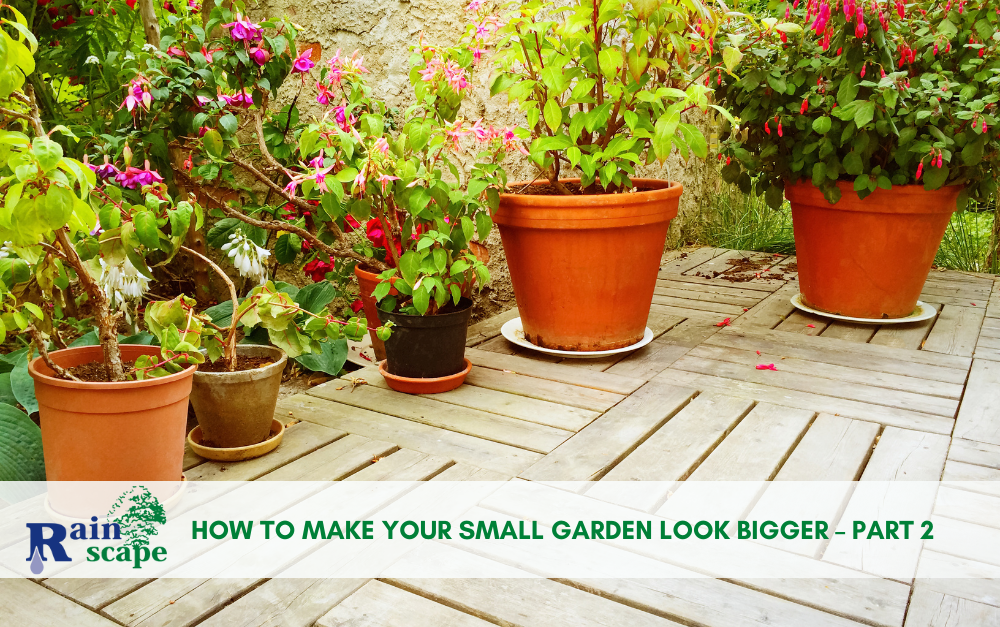Want to maximize your small garden space while creating extraordinary plantings? In the first article of this two-part series, we talked about how to use plant color and texture to create visual depth and interest. We also talked about how to create a plan and what to consider when gardening in small spaces. Your garden doesn’t have to look or feel small. Using the design tricks can help you to get the most out of any garden plot.
Here are a few more tips to help you along your gardening journey:
Use containers to accent your hardscape
Carefully curated containers can add beauty to even your hardscape. Layer plant containers just as you would a garden bed. If you have an overhang or a porch you can use hanging baskets to add layers. Containers can be placed around seating areas to add color. Use the plant material and colors from the planting beds to carryover the design and tie the spaces together.
Foliage is key
Focus on adding more foliage than flowers. Foliage is a superstar at adding lasting color to your garden spaces. Flowers blooms for limited time periods, but foliage is constant and can be complemented by perennials and flowering annuals.
Don’t forget to look up
Trellises, fences, walls, and arbors are screaming for lush vines. These upright plants with slim profiles can draw your eye upward and provide not only vertical structure, but shade. Purple Pillar Rose of Sharon is a great add as it provides gorgeous blooms and foliage to even the smallest of spaces.
Layering is not just for clothing
Pretend you’re walking through a beautiful forest. You look up and see beautiful treetops forming a canopy above you, you look down and see the mossy groundcover and dirt lined path. As you walk ahead you pass shrubs and various plants and greenery. You can bring that forest into your garden through mimicry. Plant tall shrubs and perennials and compact shrubs underneath trees. Groundcover created by low-growing annuals will create your ground layer.
Make your ornamental groundcovers and plants work double time
Planting herbs such as thyme and oregano make tasty groundcovers. Eggplants and peppers can also add an edible yet beautiful addition to your plantings. Compact fruits such as a dwarf fig or columnar apple work beautifully as trees and shrubs.
Prune for space
Pruning is a necessary evil and in small spaces it becomes your best friend. You can train ornamental and fruiting trees against a wall or fence to maximize your space and create focal points. Prune the lower limbs from taller shrubs to help create space for foliage and flowers underneath.
Divide and conquer
Breaking up a smaller garden into smaller spaces can help create the illusion of space by creating functional zones. You can use narrow, upright plants to divide into dining, work and lounging areas.
Taking the time to make a plan and carefully curate your plantings will help to make even the smallest of gardens look grand.

